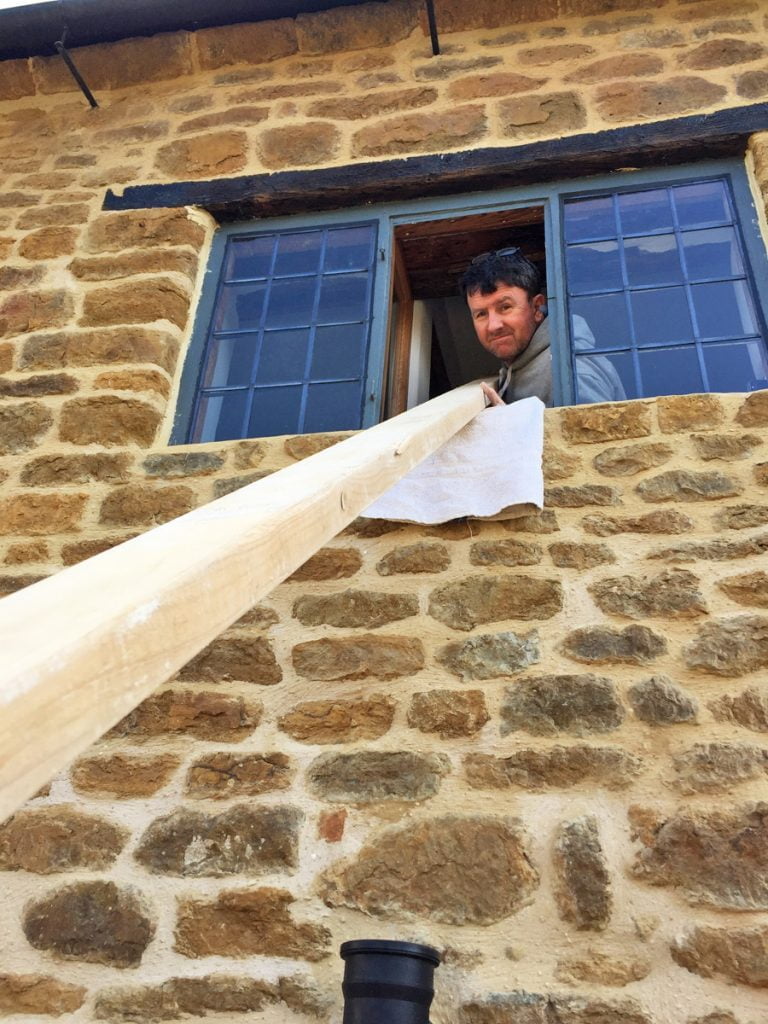
The epic attic preparations continue and on Sunday Colin was here again to help Cat clean up the beams and stone. There is a huge pile of 4×2 timbers left over from the attic conversion still up there so we need to move them downstairs and outside. The quickest and easiest route out is through the landing window, so all three of us form a chain to pass them down without damaging any plaster or windows.


Colin has tidied up all the timber we have in the garden, moving it off the lawn and piling it all up together. There are many lengths of batons here, (as well as old railway sleepers), to be used for the partition wall around the attic staircase.


As you can see the attic is really awkward to work in. We remember Dan and Tom fitting the insulation up here, rolling around the floor swearing, and the plasterers who were crawling around up here for a week resulting in some visits to the osteopath…

Cat cleaning up the timbers in the corner by the side of the chimney breast.



If you are claustrophobic, look away now. Cat said it was like sitting in an ejector seat.

This is Farrow & Ball’s De Nimes which we are using on the end wall and we are trying to decide what colour to use for the sloping ceilings.

Carpet samples! How exciting! Definitely the one on the left, a 100% wool, neutral textured carpet, although getting a 5 metre width, 8 metre length roll of carpet up into the attic will be a challenge…

The pale paint colour on the right is the paint we have used on the landing and stairs, Earthborn’s St. John, a colour we chose as it is light and bright in the dark space. The attic is also quite dark so requires a similar colour.

We would use the same colour but as the attic is modern plaster it doesn’t need the special claypaint. We are going to match the colour in cheaper Dulux trade paint as we need so much for this room, enough to cover 80 square metres, twice!
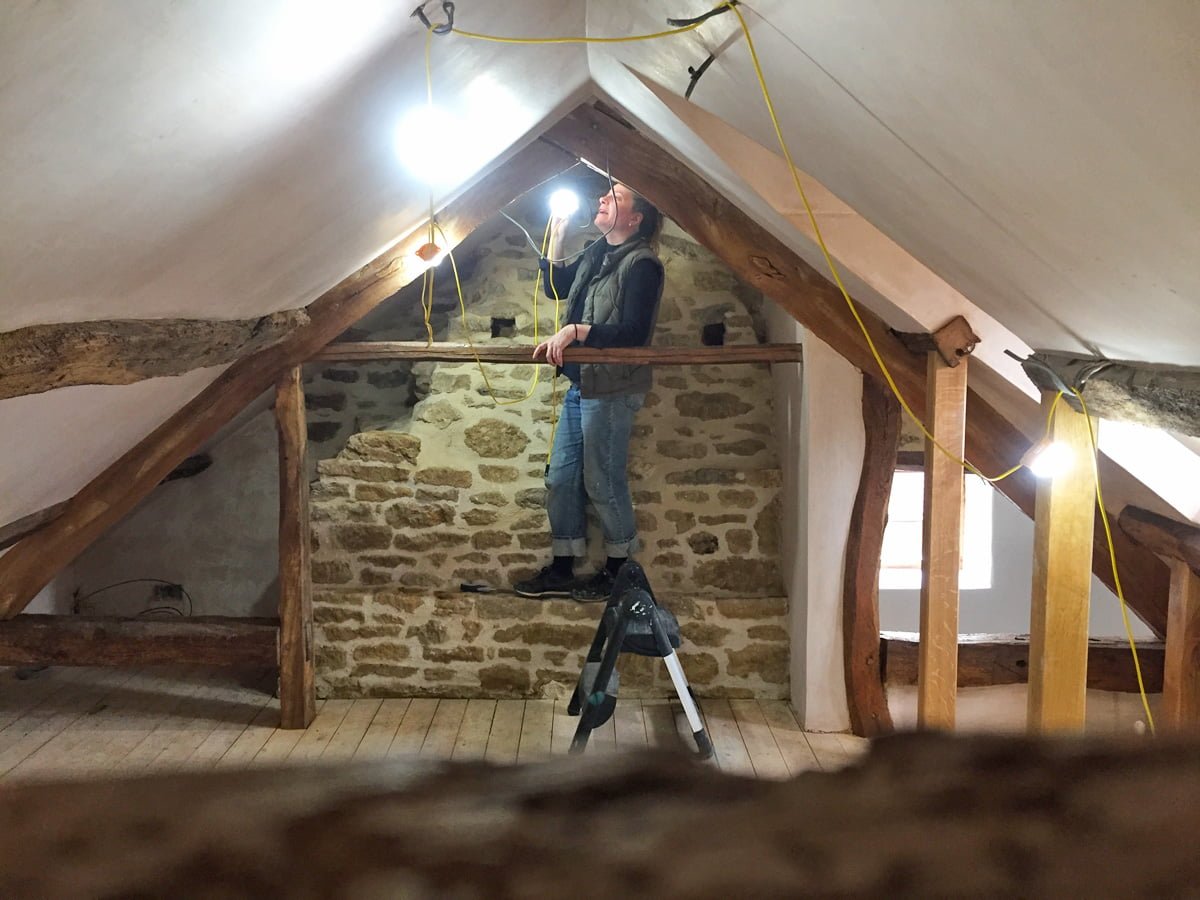
Cat has discovered what we think is active woodworm in the timbers…….. It is no surprise, the whole house was riddled at some point in history as all the timbers have woodworm holes, but we didn’t think any of it was currently active. Woodworm only survives above a certain moisture content in the timbers (so if they are cold and damp) and as this had no roof for months and then had all the moisture coming out of the fresh plaster over the winter months, it is no surprise.

It is a bit frightening to see, but this timber has been here for a few hundred years and as a result is as hard as concrete. Woodworm also will only attack the outer wood, not the heartwood, so what you see on the outside is usually the worst of it. We will treat the timber and once we have heating in the house, this (hopefully) will not be an issue again.

Most of our beams still have bark on and this one even has some old yellow lichen still on it! Amazing!

One of the purlins that was cut to fit the dormer windows. You can see the outer edge has historic woodworm but it hasn’t touched the heartwood.

The collar beams on the A-frames appear to be birch, judging by the bark and grain of the wood.

One of the lovely original nails in the A-frame.

The view through the top of the stairwell to the reinstated window. There will be a pane of toughened glass here to prevent mishaps and add privacy to the bedroom.

Literally 2 hours after the plumber left for the week our sink waste started to leak next door. We have fixed it temporarily but will have to wait until next week now to get this repaired.


Treating the soft timber where there are signs of woodworm, especially at the back of the purlins. The pile of dirt on the floor is where Cat has brushed off the crumbling wood…

Cat is treating the timbers for woodworm, hence the industrial black rubber gloves and face visor.

Another awkward position, made all the more difficult with a bloody great hole in the middle of the floor. We have partially covered this with a sheet of ply so we can access this side of the room relatively safely.

There was a great deal of timber to treat, but if a job is worth doing…
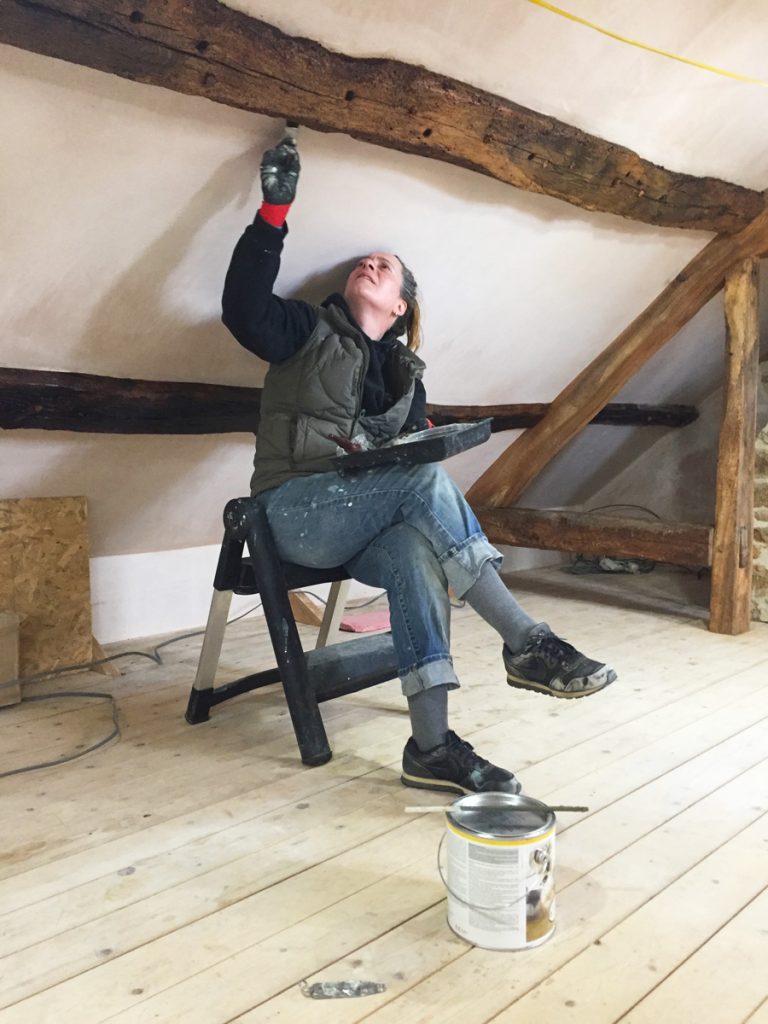
Friday morning and Cat starts the epic task of oiling all the timbers with Osmo Polyx oil.

This foot stool is proving very useful up here.
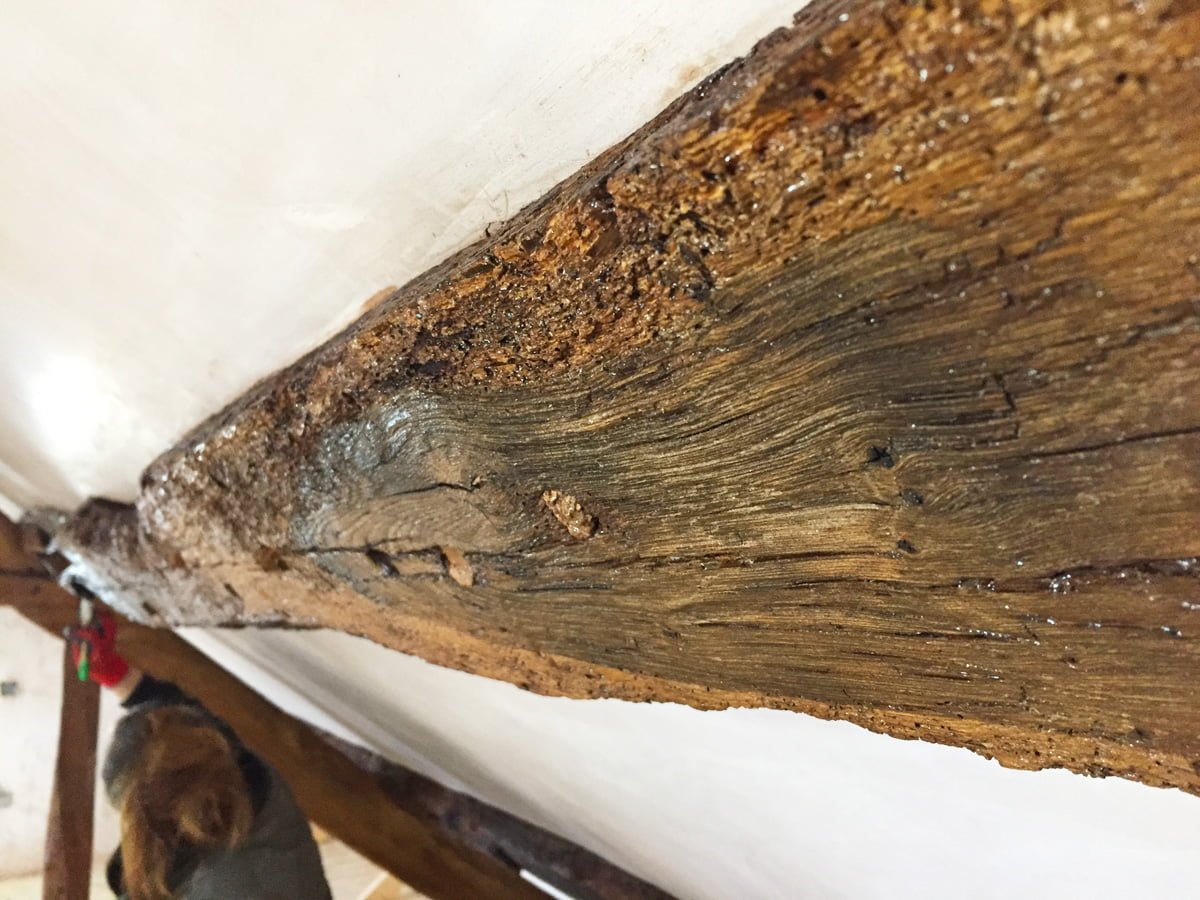
Oiling these timbers is not an easy task as the beams are so old and gnarly you have to stipple the oil into the grain with the brush. It’s super tough on the hands.

The steel plate holding the ancient oak purlins together where they had come apart at a joint.

Oak darkens with age, and our purlins are much darker than the A-frame. This would make sense as our structural engineer believes the A-frame is a later addition, added when the roof pitch was changed from a thatch to a slate roof.

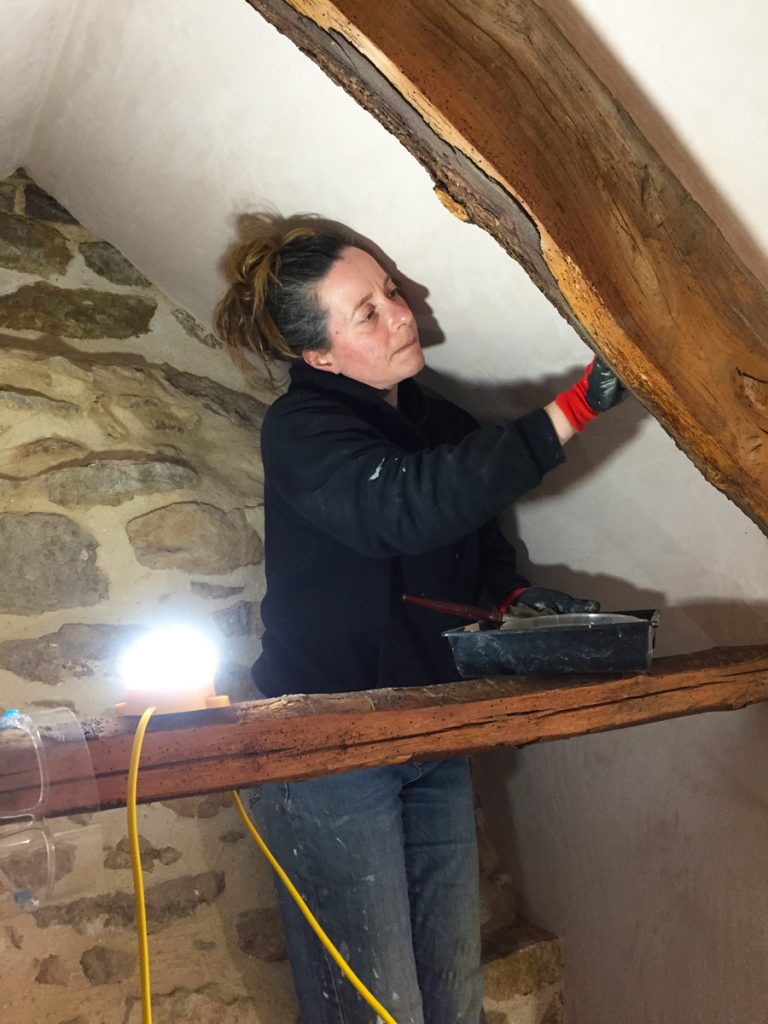

Cat has spent the whole day oiling the timbers with barely a break, working into the evening to get it all finished so it will be dry for tomorrow when she hopes to start painting.
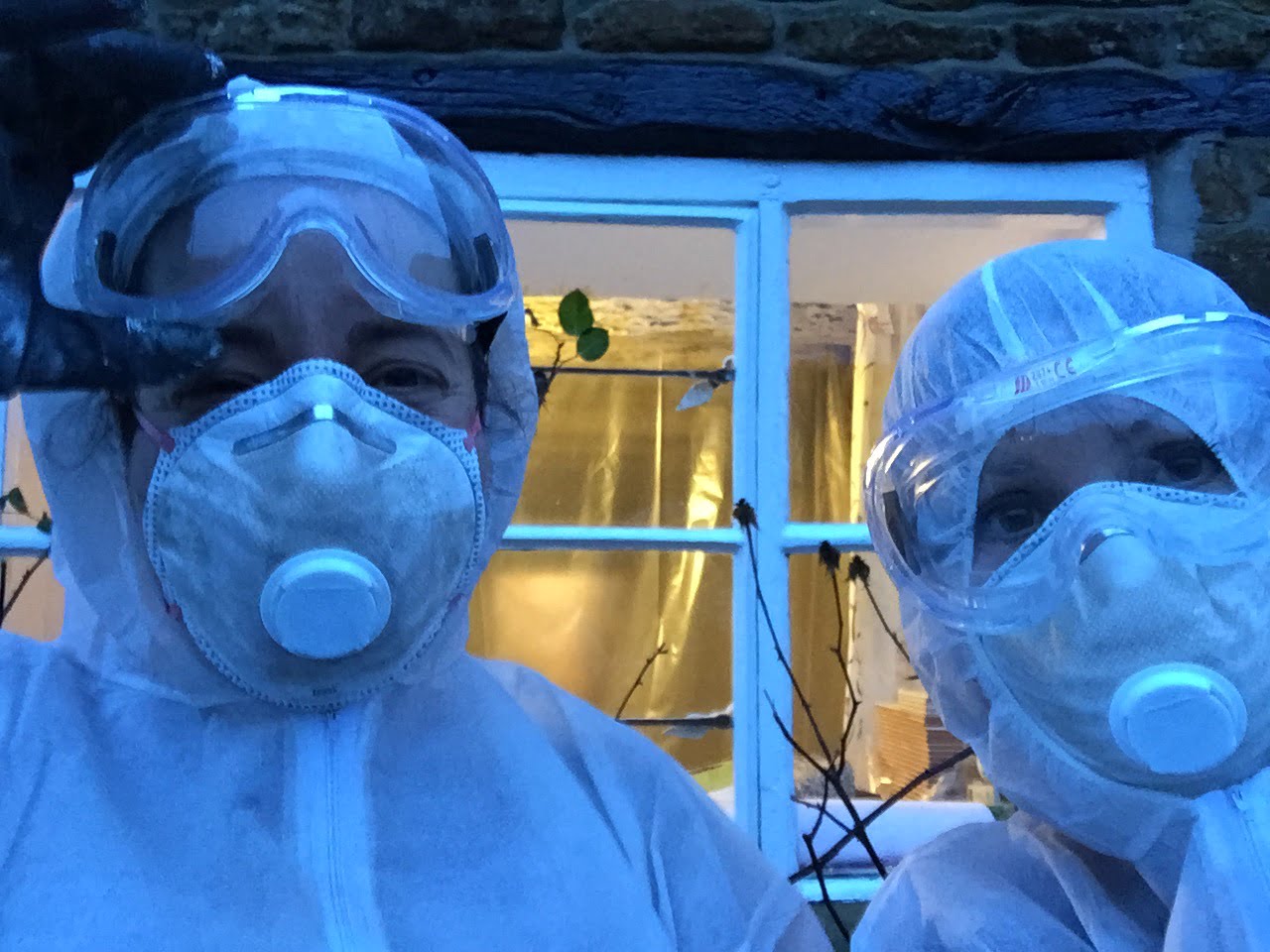

OMG – So much painting to do! You ladies (& Colin) are amazing xx